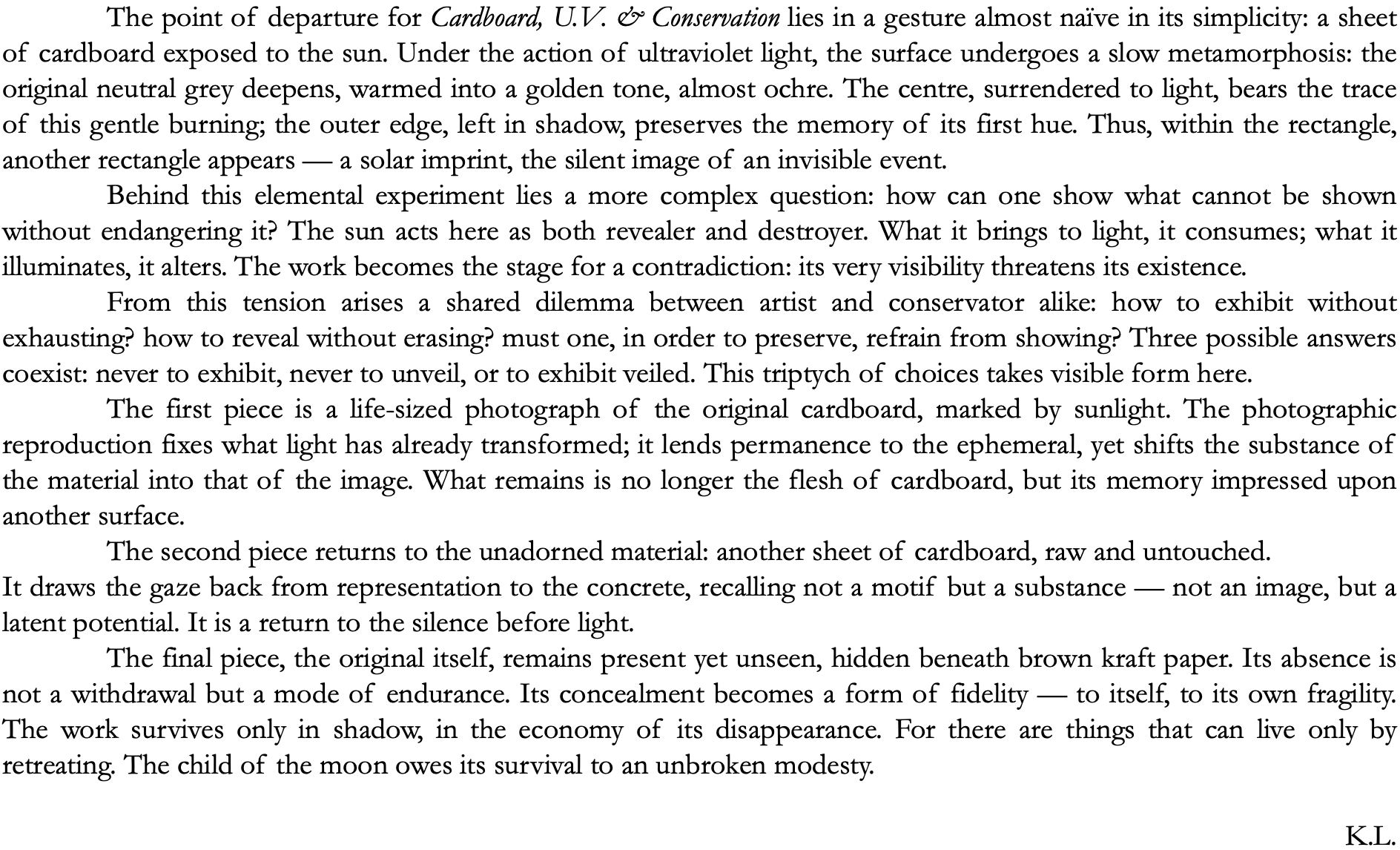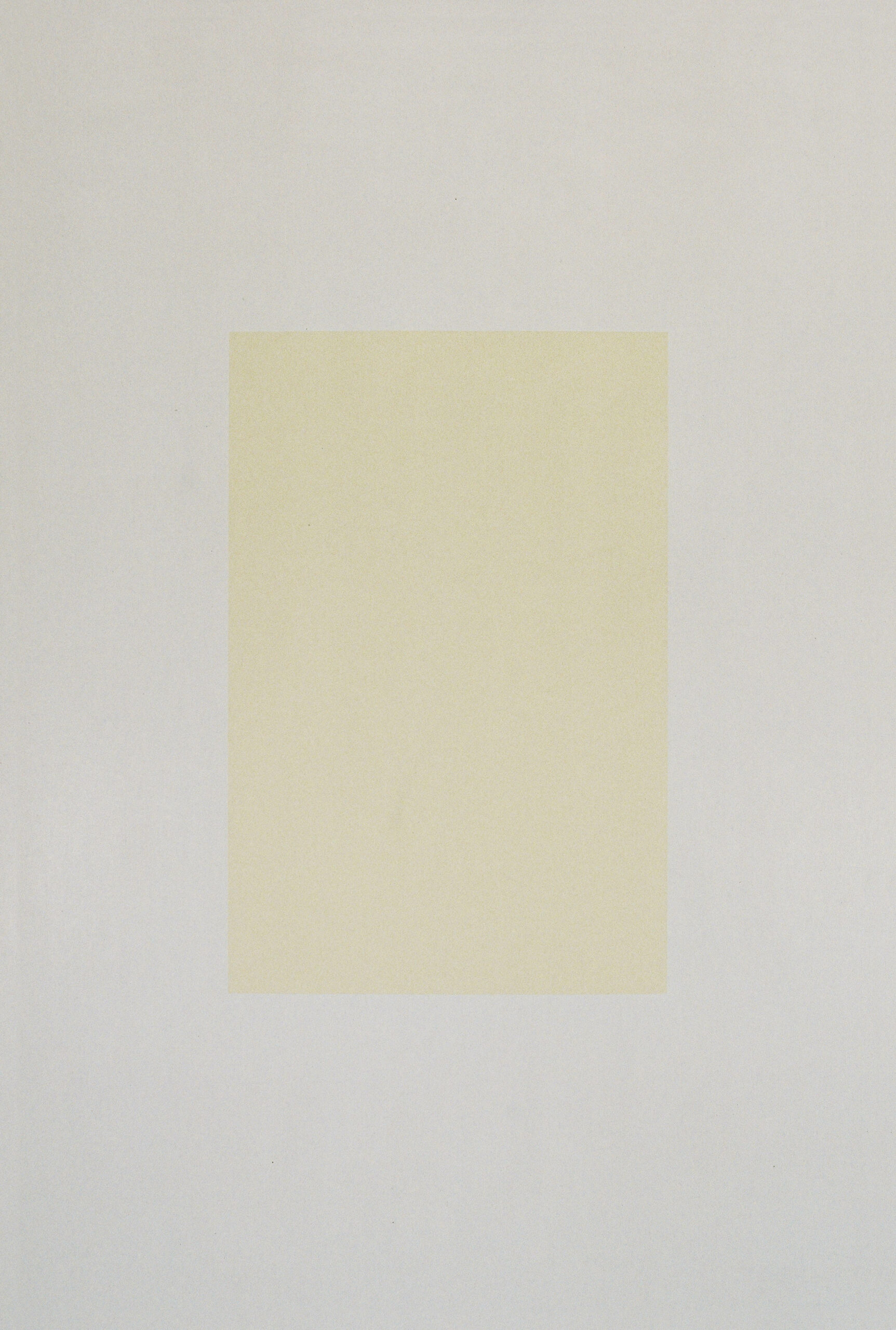
Take 1
Summer 2008
Double–ply grey cardboard, matte Fuji photographic paper mounted on PVC, 90 g/m² kraft paper, polypropylene ribbon
Photographic production: Christophe Urbain, Strasbourg, France
Overall dimensions: 90 × 240 × 0.4 cm
Individual dimensions: 90 × 60 × 0.4 cm
Photography: Jean-Philippe Senn, Strasbourg, France


Original cardboard sheet exposed to sunlight — source image for Carton, UV & Conservation
Photograph by Christophe Urbain, Strasbourg, 2008